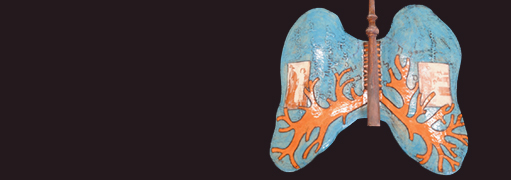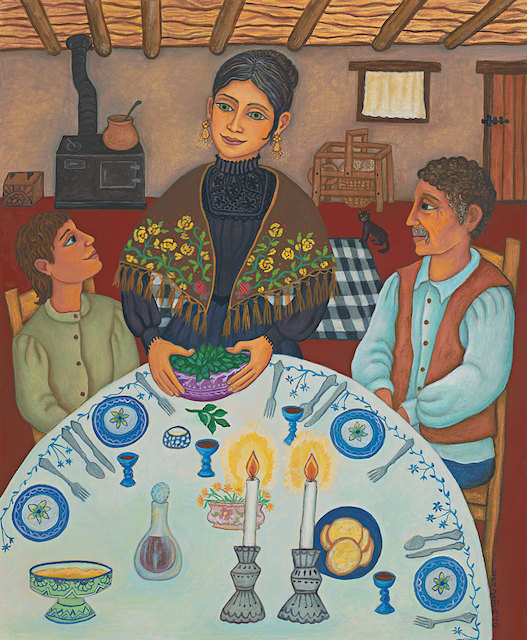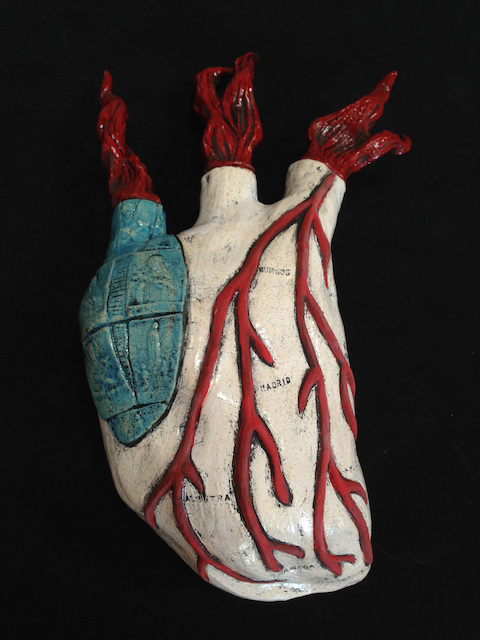When a group’s survival depends on concealment, how can you seek them out? For descendants of the Crypto-Jews, signs appear in the absence of pork on the dinner table and light up in the flare of Friday night candles.For Deborah Rael-Buckley, illumination comes from art—her own. When she discovered her ancestors were Spanish conversos (Jews who converted to Catholicism during the 14th and 15th centuries), she wanted to use her skills to convey her ancestors’ experience of arriving and acclimating to northern New Mexico. “Knowing my rich family heritage has opened new avenues for memory and imagery not before known to me,” Rael-Buckley says. Rael-Buckley’s ancestors, among hundreds of thousands, came to the recently colonized Americas to avoid religious persecution in Medieval Spain. The forced conversion led by the Inquisition resulted in some who sincerely accepted the new Catholic faith and others who continued to practice their Judaism in secret. These secret, or Crypto, Jews found life in Spain difficult, and when opportunity to move to a new continent materialized, many set sail for colonies in the new world. Renewed harassment of Crypto-Jews in the colonies prompted another large-scale migration—this time north, to the Southwest. Congregation Nahalat Shalom of Albuquerque (3606 Rio Grande NW) will celebrate the Sephardic and Crypto-Jewish experience during their annual three-day Festival Djudeo-Espanyol. Featuring scholars, musicians, poets and artists, the event showcases the intersection of Crypto-Jewish and Hispano life that has persevered for centuries behind the state’s dusty backdrop.New to the celebration is the diverse collection of work from nuevomexicano artists depicting Crypto, Sephardic and Ashkenazi Jewish perspectives. This variation of practice is reflected in the art. “There is no set pattern,” notes Jade Gordon, curator of the show. Portraits illume creases on pensive faces. A nicho burns blue and white with a scene of a long-ago Christmas among the Taos Mountains. Cutting through the celebratory parishioners is the outline of a door—a hint of orange behind. Once open, the doors of the ornamental box reveal a festive scene of Hanukah as practiced by a Crypto-Jew family, now skeletons. It’s an image of appealing terror, of the anxieties underlying a cloaked religious life. Working in the often loud and Catholic tradition of Taos folk art with altar boxes and other creations, Anita Rodriguez has captured the duality of the Crypto-Jew experience with verve and solemnity. “For so many of these people, it’s not only a religious issue, it’s a juxtaposition of identity and traditions,” says Green. Posing beside Rodriguez’ multicolored shadow boxes are Rael-Buckley’s sculptures. In their work, both creators depict aspects of a Hispano Sephardic and Crypto-Jewish experience, but the likeness is not evident in appearance. Where Rodriguez tells a story, Rael-Buckley expresses something less tangible, emotion drawn from a deep current. “For Deborah, art is a way of exploring your past, your feelings … you never quite know what’s going to come out,” says Green. What has revealed itself is striking: a pair of blue lungs, spread like wings. A white heart with tongues of red lashing out. The sculptures are reminiscent of anatomy models, veined and swollen. Rael-Buckley’s use of color and other detail imbue the pieces with an emotional world—stirring and bittersweet. Old family photos stand out muted against the bright lungs. Shadowy figures inscribe a ventricle. The stories here are as elemental as our own organs, but we can’t quite make them out. They are a part of us, obscured.The meaning Rael-Buckley mines is based in memory—how humans classify and organize the fragments of a life. Her pieces decant the importance of impression from the very material of their creation. “[Clay] also has its own geological memory—you can tell from the smallest shard of ceramic work, where the clay is from, how it was worked, what was stored in it and how objects moved from place to place,” she says of her chosen medium. For Crypto-Jews, the act of remembering and passing on heritage was especially important, with their religious practice threatened by eradication. In minute practices like the closing of a door for prayers or throwing swept dirt through the window in avoidance of the sacred door, traditions survived. The art created by descendants and enthusiasts does nothing less than revive the New Mexican Crypto-Jewish experience as one stratified, encompassing the varied lives the people were obliged to inhabit.In Hidden and Revealed: Artists’ Reflections of the Crypto-Jewish Experience, the sacred and profane messages remain both well-defined and unexpressed. Alongside Rael-Buckley and Rodriguez’ work are Leo Neufeld’s burning-eyed portraits and Diana Breyer’s detailed oils, among others. The art is on display throughout the weekend festival, and the artist reception will take place on Saturday, May 17, from 5 to 7pm. Nahalat Shalom requests a donation for entry, but no one will be turned away for lack of cash.—CORRECTION: A previous version of this story misstated curator Jade Gordon’s last name. The Alibi regrets the error.
Hidden and Revealed: Artists' Reflections of the Crypto-Jewish Experience opening receptionSaturday, May 17, 5 to 7pmNahalat Shalom's Festival Djudeo-Espanyol 2014Exhibit and fest run Friday through Sunday, May 16-18Gallery of Congregation Nahalat Shalom3606 Rio Grande NWnahalatshalom.org













